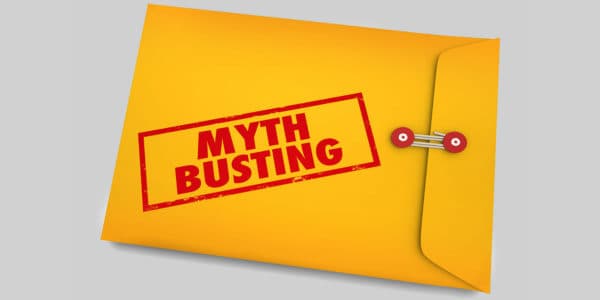Assuming you’ve obtained the health and fitness qualifications you need to be a professional personal trainer, it’s time to take the next step and launch your very own business. The great news is that personal training can be an extremely rewarding venture – not just financially but personally, as you’ll be motivating people to improve their physical and mental health.
Key takeaways
- Identify your target clientele early to effectively tailor your marketing strategies and services.
- Incorporate your business to benefit from limited liability and potential tax advantages.
- Establish a strong online presence through a professional website and social media to attract clients.
In this blog, we’ll take you through all the key steps to officially becoming a personal trainer. Among other details, we’ll explain how to price your services, why you should incorporate your business, and how to find your first clients.
1. Determine your expertise
There are countless health services that you can provide as a personal trainer. So, to start with, determine whether there is a particular area you wish to focus on. Perhaps you have a keen interest in a specific sport like running or yoga, or maybe you’re a jack-of-all-trades.
You might also want to provide additional services. For example, nutrition, advising customers how to eat right to achieve their individual health goals, or sports massage, assisting them with the cool-down session and proper physical recovery.
For these extras, though, you’re likely to need further qualifications, so be sure to double-check the minimum requirements for the type of personal training services you want to provide. Typically, you’d start as a general personal trainer, assisting people with things like:
- Strength training
- Weight loss guidance
- Stamina build-up
- Health and nutrition management
- Formulating tailored fitness plans
Another important factor to decide at this stage is which type of clientele you are going to serve. Will you specialise in fitness for young adults or older people? Maybe you specifically want to work with a certain gender group or professional athletes. Your target market will play a huge role in the promotion of your new personal trainer business, so get this key detail decided early.
2. Set-up costs
It’s now time to get set up. Let’s take a look at how much that might cost you as a newly qualified personal trainer.
Business location
First off, where are you going to run your personal trainer business from? If you prefer an authentic experience, you may need to rent a fitness studio.
Sites like Giggster and Sharesy can help you find rental studios based on your ideal location, capacity, and duration. You can even specify the space style and features you’d like. For example, some are empty and some are stocked with fitness equipment.
On these websites, studios in London range from as little as £20 to over £400 per hour, so it’s essential to determine what you need from a studio and shop around. Alternatively, if you have the space, you could cut costs and open a studio at home.
A more cost-effective (and popular) option is to be a mobile personal trainer. For a new entrepreneur in this industry, this might be more suitable. It saves you money and gives you the flexibility to meet clients in a variety of different spaces, like local parks.
Alternatively, you could consider virtual personal training. In this modern age, you can communicate with customers and run live personal training sessions online. This is an excellent option, as it eliminates the cost of a physical business space, and gives customers (and you) the flexibility to train from anywhere.
In addition, it saves you valuable time that you’d otherwise spend travelling, and removes geographical restrictions, meaning you can expand your customer base far and wide beyond the UK.
Training equipment
Next is your training equipment. As a new personal trainer without any customers yet, you probably don’t need to invest in every piece of gym equipment there is (that would be incredibly expensive), unless there is a specific area that you’re going to specialise in.
For example, if you want to focus on cardio training, you might need a treadmill or an exercise bike. Otherwise, stick to the basics for now. At the very least, you’ll need:
- Weight equipment – A full set of weight training equipment, like dumbbells (£370 – £1,000), kettlebells (£50 – £700), and barbells and weight plates (£35 – £150). You should have a variety of weights and types, allowing customers to choose what they’re most comfortable with.
- Strength equipment – For example, a weight bench (£70 – £550) and a squat rack (£120 – £980).
- Conditioning equipment – Such as exercise mats (between £20 and £130 depending on size and thickness), resistance bands (up to £20 for one set), and battle rope (around £50 each).
Training equipment will be one of your biggest investments when starting a personal trainer business. Generally, you should prepare to spend a minimum of around £2,000. Remember to opt for reliable gear, to ensure your customers’ safety and to deliver a high-quality service.
Now there are ways to cut some of these costs down. For instance, you could opt for second-hand equipment, which you can find on platforms like Facebook Marketplace or eBay, or ask that customers provide some equipment of their own. It would be unreasonable to expect clients to source their own weight bench, but they could provide their own resistance bands, for example.
Other equipment
If you’re a mobile PT and don’t yet have a business vehicle, this is another significant cost to bear. You should opt for a sizeable car, as you’ll need to take equipment with you on the road. Although, remember that certain car specs can hike your insurance and maintenance costs.
It’s also essential to have a well-stocked first-aid kit in case of an injury, which will cost you no more than £25. Find out what your kit should contain on the NHS website.
Business management software
When you start to take on clients, you’ll need a way to manage bookings and payments. For efficiency and ease, we highly recommend automating these processes. Here are some software suggestions to help you get started:
- Mindbody – Rated ‘Excellent’ on Trustpilot, Mindbody is “the world’s largest fitness and wellness marketplace.” This software allows personal trainers to manage their revenue, clients, and business growth all in one place, from £129 per month.
- Vagaro – For a more affordable option, try Vagaro. While your personal trainer business is in its infancy, prices start at just £30 a month, after a free trial. Rated 4.5 stars on Trustpilot, Vagaro features payment processing, online booking, invoice management, and social media integration for messaging and advertising capabilities.
- FreshBooks – An all-in-one accounting software that helps you manage your time, expenses, and invoices. Streamline your business with FreshBooks by syncing your existing apps like Shopify and Gmail. Get 50% off your first three months with a standard sign-up, or get low transaction fees on top by opening a Barclaycard business bank account, which you can do through QCF.
In addition, if you register your personal trainer business with us, you’ll be able to redeem a variety of exclusive partner offers on a range of accounting, tax, and payment solutions (and more).
3. Pricing
The next step to starting a personal trainer business is to decide how much you’ll charge for your services, and the method in which you’ll charge customers. Will it be a pay-as-you-go model or a subscription? Will you charge per hour or per session? You need to button down all these important details before you’re ready to take on clients.
Your prices will largely depend on where you carry out your services. If you have to rent a training studio, if you’re based in a metropolitan area (like London), or travel a fair distance to see a customer, then you’ll need to boost your profit margins to outweigh those expenses.
Naturally, prices will also depend on demand; the more of it, the more you can increase your prices.
Your experience is another crucial part of your pricing structure. Yes, you’re qualified, but your business is brand new. In the early stages, you may not be able to charge as much as you might want to. However, as you gain experience, it’s perfectly acceptable to adjust your prices to match the level of personal training services you offer.
Other influential factors are competition (how does your business compare to others? What do you offer that they don’t, and vice versa? Are you operating in a congested location?) and your internal costs. These may differ between customers as everyone will have different fitness goals.
You could focus purely on body weight with one client and a variety of strength training with another. One may also need additional nutritional support, while another may not. You’ll need to account for all these services and equipment, making sure that your earnings exceed your running costs.
To help you decide on your prices, the Fitness Group advises the average personal trainer costs per session and per hour across the UK:
| UK regional area | Average cost per PT session | Average hourly rate |
| London | £50 – £150 | £32.52 |
| South West England | £45 – £90 | £16.30 |
| South East England | £35 – £75 | £15.10 |
| North East England | £35 – £75 | £15.63 |
| North West England | £35 – £75 | £16.74 |
| The Midlands | £35 – £75 | £15.80 |
| Glasgow, Scotland Central, & Edinburgh | £35 – £75 | £15 – £18 |
| Scotland – Aberdeen, Dundee, Perth & other regions | £30 – £60 | £12 – £15 |
| Wales & Northern Ireland | £30 – £60 | £12 – £15 |
You can use these figures for guidance, remembering to adjust them to your personal circumstances, including the cost of living and inflation.
4. Write a business plan
Now that you’ve got the basics covered, it’s time to write a business plan. Its primary purpose is to check if your personal trainer business is viable and, essentially, if it’s worth starting. The secondary purpose is to seek funding to grow your company.
A business plan contains many different sections, the key ones being:
- About me – Explain your background, experience, and motivations behind starting your personal trainer business. Don’t be afraid to express your character here, as this is what potential investors will want to connect with.
- Your prices and services – Clearly explain the personal training services you plan to offer, how you’ll deliver them to customers, and how much you plan to charge for them.
- Target market – What does your typical customer look like and why are they interested in your personal training services? Explain the research you’ve done to find this information.
- Competitor research – You need to prove that you’ve studied the market conditions and understand how your new business fits in with them. There’s no doubt you’ll have competitors around you, so you need to identify them and analyse how your business compares. You should explore direct competitors (other personal trainers) as well as indirect ones (such as gyms and leisure centres).
- Operations – Explain how your business will operate day-to-day. How will you deliver your services to your customers and how will you get paid?
- Marketing plans – Express how you’ll promote your business and grow your clientele. Your plans are likely to include social media advertising and leaflet distribution at local gyms.
- Financial – What return on investment (ROI) do you anticipate in your first two to five years, and how will you achieve it?
This is a snapshot of what a typical business plan looks like. For more guidance on this with step-by-step instructions, see the following article: How to write a business plan.
5. Register as a limited company
Next, we highly recommend registering your personal trainer business as a private company limited by shares, the most popular company structure in the UK.
This is not essential and you may be considering operating as a sole trader. However, incorporation offers significant tax, financial, and legal benefits that you won’t be entitled to as a sole trader.
Benefits of incorporation
First and foremost, a limited company is a separate legal entity, meaning that in the eyes of the law, it is independent of yourself and any other owners. This is a vital advantage that protects your personal assets. As a sole trader, on the other hand, your personal and business finances are one, so if your business falls into debt, that means you do too.
Consequently, you’re entitled to limited liability as a limited company owner. So, if your company faces financial or legal difficulties, you’re only responsible for the value of your shares in the business – and the same goes for any other shareholders. That way, you spread the risk as opposed to bearing 100% of it as a sole trader.
Another important advantage is taxation. Not only are limited companies entitled to additional allowable expenses, but they also pay Corporation Tax at a lower rate of 19-25% versus up to 45% in Income Tax that self-employed individuals pay.
On top of that, private limited companies are generally perceived as more credible and trustworthy than sole traders. This is because they are regulated by the Companies Act 2006.
- When should I convert from sole trader to limited company?
- What information do I need to set up a limited company?
- What does limited liability mean?
Finally, the Act will protect your business name, ensuring that no other company uses the same name or anything similar as long as your company is active. So, you can rest assured that the reputation you’ll have worked so hard to build won’t go to waste.
We must point out, however, that owning a limited company comes with a series of ongoing legal and administrative duties. You can find more information on this in the following article: The role and responsibilities of a company director.
Register with QCF
If you’re ready to register, you can form your company in just a few hours with QCF’s quick and simple online registration process. Simply choose your company name (and check that it’s available), select your formation package, checkout, and enter your company and officer details.
For more guidance, see our blog: Set up a limited company in 4 easy steps. Alternatively, if you’d prefer to speak to one of our agents, contact us on 020 3908 0044 or by live chat.
6. Legal
There are no specific licences required in the UK to become a personal trainer. However, there are certain certifications you need before you can do this job professionally.
As mentioned, this blog is based on the assumption that you have these already. However, to confirm, at the very least, you need a Level 2 Gym Instructor qualification and a CIMSPA-endorsed Level 3 Personal Trainer qualification (this allows you to work as a personal trainer). You also need to be trained in first aid.
To attract more customers, it may be worth obtaining additional qualifications, such as a Level 4 in Advanced Personal Training or Nutrition. The more certified you are, the more marketable your personal trainer business will be.
7. Obtain business insurance
As a personal trainer, you’ll be in regular contact with the general public. You may also work with people who are recovering from injuries, and you’ll need to avoid your customers getting injured while on your training programme.
With that in mind, it is essential to obtain Public Liability Insurance before starting your business. This covers you for death, injury, or illness to others and loss of, or damage to, third-party property.
We also recommend taking out Directors’ Liability Insurance. If someone claims that you have neglected your director’s duties, this covers the legal fees involved.
Other types of insurance you may need include:
- Professional indemnity insurance
- Building and contents cover (if you have a physical training studio)
- Vehicle insurance
- Equipment cover
- Personal accident cover
8. Advertise your personal trainer business
Your new business is ready to flourish, so now it’s time to attract customers. Here are some initial marketing tips:
Create a website
No matter what type of business you run or what industry you operate in, a website is a must. Not only does it make it easier for potential clients to find you, but it also makes your company appear more credible and professional.
WordPress, Wix, and Squarespace are some of the most popular options for website design and hosting, with free and paid plans available to suit your budget. You’ll also need a suitable domain name, which is included in every QCF package.
You don’t need to design knowledge to build a high-quality website. The platforms we’ve suggested above all come with templates to align with your vision and style.
Register with NRPT
With over 800 qualified trainers nationwide, the National Register of Personal Trainers is the UK’s best personal trainer directory. Sign up for an annual fee of £135 and enjoy the following membership benefits:
- Improve your discoverability with over 40,000 unique monthly searches for a personal trainer
- Create a personalised online profile
- Access marketing expertise to help your business grow
- Utilise promotions that cut your costs and allow you to earn money from clients
- Access the member area
- Enjoy exclusive partner offers on fitness products and equipment
In addition, the NRPT provide a range of personal trainer courses, should you wish to obtain additional qualifications or arrange training for future employees.
Create a Google Business profile
One of the most common ways that customers will discover you is through a simple Google search – ‘personal trainers near me’. To ensure that your business features in the results, you need to create a free Google Business profile.
Your profile features all your essential business information, such as address, contact details, reviews, and a website link. You can also personalise your profile with opening hours, logo, and photos.
You will also be able to view performance insights, such as how people discovered your personal trainer business, and how many interactions you’ve had in a specific timeframe, allowing you to adapt your marketing strategy over time.
Promote on social media
A social media presence is also a non-negotiable. These platforms give potential customers plenty of extra ways to find and engage with you, and gain an insight into who you are as a brand.
You should create a Facebook, and Instagram profile to start with – at the very least. Facebook, the world’s most popular social channel, is great for advertising and managing enquiries, and Instagram is best for sharing photos and videos of your work and experience.
Another useful platform for personal trainers is TikTok. With a forecast of 955 million global users by next year, you could unlock a world of advertising potential for your new business on this social media platform.
Remember that before posting content, you ensure that it matches the look and feel of your website, to facilitate a seamless brand experience.
Finally, don’t forget that professional connections are just as important, especially in the start-up phase. We recommend creating a LinkedIn profile for your personal training company, where you can discover other leaders, entrepreneurs, and investors to help drive your business forward.
Wrapping up
If you’re a qualified personal trainer ready to take the leap and be your own boss, get started with this complete guide. Thanks for reading and we hope you found this article helpful. Please feel free to leave us any comments or questions you might have below.














Join The Discussion
Comments (4)
Thanks for the article! These personal trainer business tips will be helpful for my own financial services UK business.
Thank you for your kind comment, David. We’re glad you found the tips useful!
Kind regards,
The QCF Team
Thank you for posting this! I found it very helpful :)
Thank you for your kind comment, Amelia. We’re glad you liked it!
Kind regards,
The QCF Team